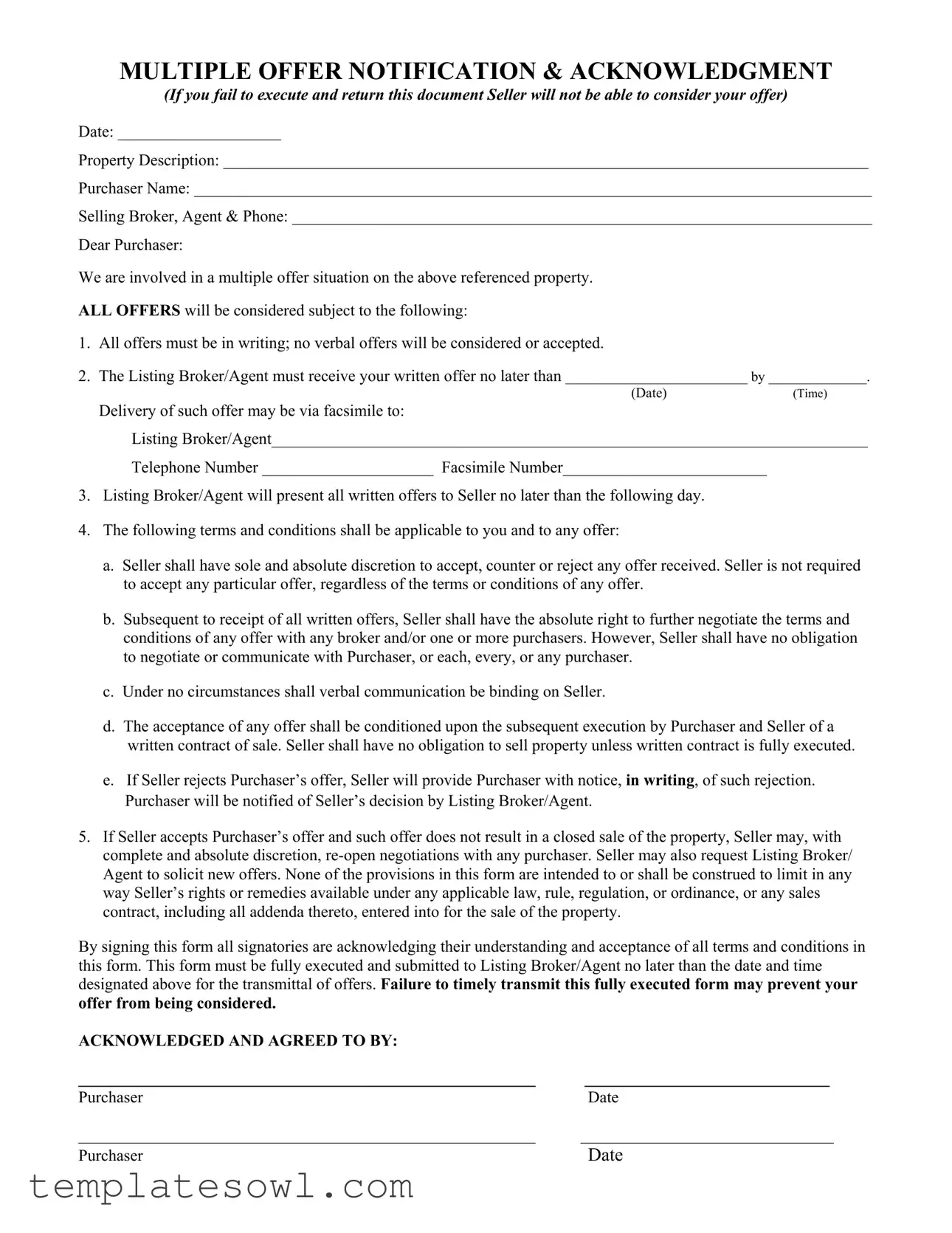______________________________
Date
_______________________________
Date
MULTIPLE OFFER NOTIFICATION & ACKNOWLEDGMENT
(If you fail to execute and return this document Seller will not be able to consider your offer)
Date: ____________________
Property Description: _______________________________________________________________________________
Purchaser Name: ___________________________________________________________________________________
Selling Broker, Agent & Phone: _______________________________________________________________________
Dear Purchaser:
We are involved in a multiple offer situation on the above referenced property.
ALL OFFERS will be considered subject to the following:
1.All offers must be in writing; no verbal offers will be considered or accepted.
2.The Listing Broker/Agent must receive your written offer no later than __________________________ by ______________.
(Date)(Time)
Delivery of such offer may be via facsimile to:
Listing Broker/Agent_________________________________________________________________________
Telephone Number _____________________ Facsimile Number_________________________
3.Listing Broker/Agent will present all written offers to Seller no later than the following day.
4.The following terms and conditions shall be applicable to you and to any offer:
a.Seller shall have sole and absolute discretion to accept, counter or reject any offer received. Seller is not required to accept any particular offer, regardless of the terms or conditions of any offer.
b.Subsequent to receipt of all written offers, Seller shall have the absolute right to further negotiate the terms and conditions of any offer with any broker and/or one or more purchasers. However, Seller shall have no obligation to negotiate or communicate with Purchaser, or each, every, or any purchaser.
c.Under no circumstances shall verbal communication be binding on Seller.
d.The acceptance of any offer shall be conditioned upon the subsequent execution by Purchaser and Seller of a written contract of sale. Seller shall have no obligation to sell property unless written contract is fully executed.
e.If Seller rejects Purchaser’s offer, Seller will provide Purchaser with notice, in writing, of such rejection. Purchaser will be notified of Seller’s decision by Listing Broker/Agent.
5.If Seller accepts Purchaser’s offer and such offer does not result in a closed sale of the property, Seller may, with complete and absolute discretion, re-open negotiations with any purchaser. Seller may also request Listing Broker/ Agent to solicit new offers. None of the provisions in this form are intended to or shall be construed to limit in any way Seller’s rights or remedies available under any applicable law, rule, regulation, or ordinance, or any sales contract, including all addenda thereto, entered into for the sale of the property.
By signing this form all signatories are acknowledging their understanding and acceptance of all terms and conditions in this form. This form must be fully executed and submitted to Listing Broker/Agent no later than the date and time designated above for the transmittal of offers. Failure to timely transmit this fully executed form may prevent your offer from being considered.
ACKNOWLEDGED AND AGREED TO BY:
________________________________________________________
Purchaser
________________________________________________________
Purchaser
